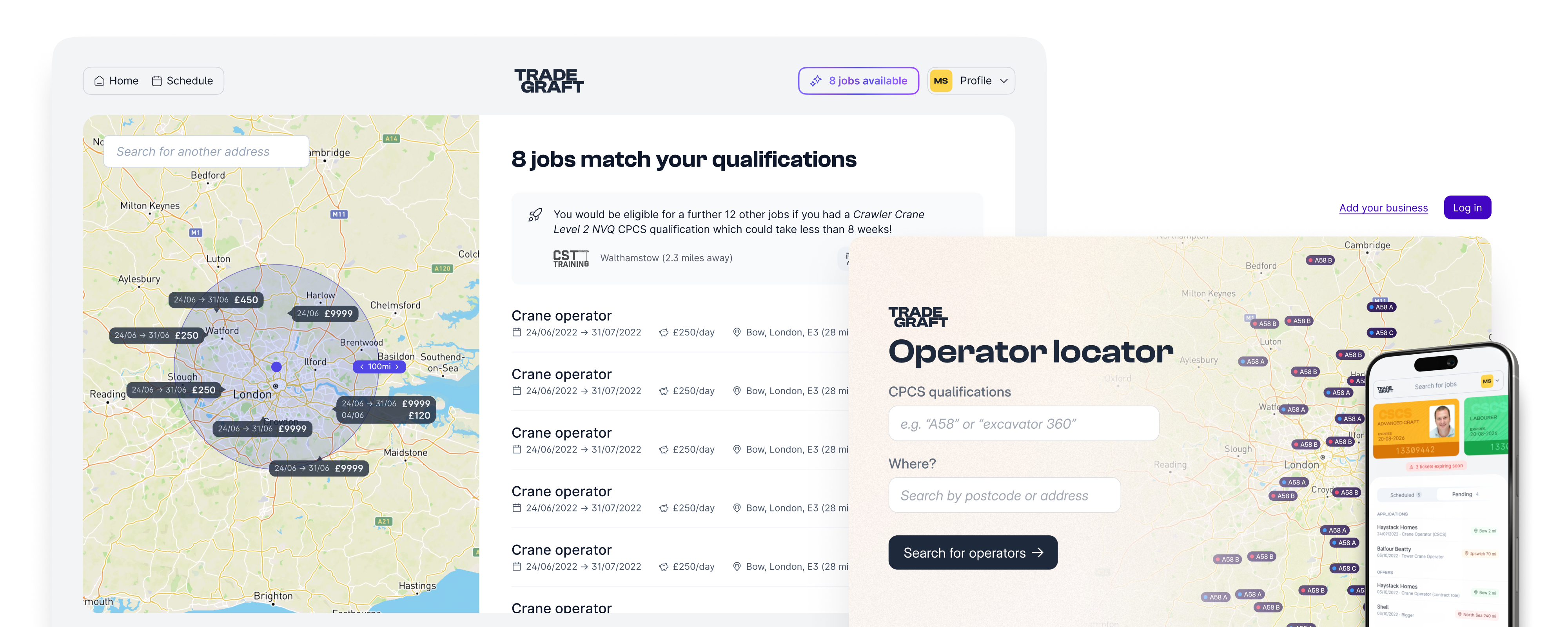Case study
Tradegraft: connecting construction sites with verified operators
- Product design
- Branding
- Go
- PostgreSQL
- Docker
- Google Cloud Run
- Firebase
The construction industry has long relied on slow, traditional recruitment methods, making it difficult for site managers to find qualified workers quickly. As a co-founder of Tradegraft, I set out to solve this by building a two-sided marketplace to directly connect skilled operators with construction sites.
Our key differentiator was a real-time qualification validation system, made possible through an exclusive partnership with the country's largest machinery accreditor. The product consisted of two web platforms: one for operators and one for site managers, both powered by a single backend. My role covered branding, UX design, and all backend development.
Setting the foundations
To solve the "chicken-and-egg" problem inherent in any marketplace, we focused on supply first. We secured a partnership with a major plant company to seed the platform with jobs, which saw a few hundred operators sign up within the first few weeks. With this foundation, I designed the user flows for both platforms, focusing on simplicity and trust. The goal was to build a core product that solved the primary problem for both parties.
Challenges along the way
The biggest technical challenge was our core promise: real-time qualification validation. For site managers, trust is everything.
As the backend developer, my task was to build a robust and reliable wrapper around this system. I architected and built a service in Go that could handle the complex communication, process the inconsistent data, and link a verified status to an operator's profile in our Postgres database.

The outcome
We successfully designed, built, and launched the full Tradegraft platform inside six months. The real-time validation feature worked as designed and became our most powerful selling point, directly addressing a major industry pain point. Our initial strategy proved effective, attracting hundreds of operators quickly.
Ultimately, despite the technical success of the product, the startup struggled to achieve product-market fit, and we made the difficult decision to wind the company down. While the business venture concluded, the project itself was a success in product delivery. It was a fulfilling experience to own a product from multiple angles: brand, design, and complex backend engineering, and to navigate the real-world challenges of building a startup from idea to a fully functional marketplace.
